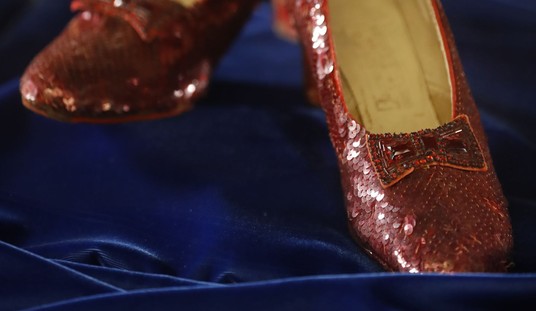Last Friday I wrote about author Jonathan Haidt’s next book outlining a mental health crisis among American teens. Haidt believes there is clear evidence of a change around 2010-2012 with the advent of teens having access to smartphones. Since there, there has been an increase in reports of depression (which is worse among girls) as well as a jump in attempted suicides.
Today, the CDC published new research which seems to back up Haidt’s contention. It describes the a world of violence and trauma which many teen girls now inhabit.
Nearly 1 in 3 high school girls reported in 2021 that they seriously considered suicide — up nearly 60 percent from a decade ago — according to new findings from the Centers for Disease Control and Prevention. Almost 15 percent of teen girls said they were forced to have sex, an increase of 27 percent over two years and the first increase since the CDC began tracking it.
“If you think about every 10 teen girls that you know, at least one and possibly more has been raped, and that is the highest level we’ve ever seen,” said Kathleen Ethier, director of the CDC’s Division of Adolescent and School Health, who said the rise of sexual violence almost certainly contributed to the glaring spike of depressive symptoms. “We are really alarmed,” she said…
Almost 3 in 5 teenage girls reported feeling so persistently sad or hopeless almost every day for at least two weeks in a row during the previous year that they stopped regular activities — a figure that was double the share of boys and the highest in a decade, CDC data showed.
Girls fared worse on other measures, too, with higher rates of alcohol and drug use than boys and higher levels of being electronically bullied, according to the 89-page report. Thirteen percent had attempted suicide during the past year, compared to 7 percent of boys.
The NY Times has a separate but clearly related story today about what it calls “TikTok tics.” These are odd physical behaviors which some teens seem to have picked up during the pandemic from watching other teens on social media.
Aidan’s tics erupted one day after school in early 2021, about a month after the long pandemic lockdown had ended. The 16-year-old convulsed while walking into the house, head snapping and arms swinging, sometimes letting out high-pitched whistles and whoops.
Aidan’s parents looked up from the living room couch with alarm. They had been worried about the teenager’s ratcheting anxiety — related to Covid, gender dysphoria, college applications, even hanging out with friends. But they were not prepared for this dramatic display.
“We watched this happen in front of our eyes,” Aidan’s mother, Rhonda, recently recalled. “It looked like Aidan was going crazy.”
They rushed Aidan to the emergency room, but doctors found nothing wrong. After calling a neurologist, the family learned that more than a dozen adolescents in Calgary had recently come down with similar spasms.
Over the next year, doctors across the world treated thousands of young people for sudden, explosive tics. Many of the patients had watched popular TikTok videos of teenagers claiming to have Tourette’s syndrome. A spate of alarming headlines about “TikTok tics” followed.
I wrote about a study highlighting the surge in Tourette’s-like symptoms among teens back in 2021. The academics behind that report called it a “mass sociogenic illness.” They believed the surge was largely caused by some popular social media accounts including a German YouTuber:
On February 21st 2019 – only shortly before the first patient with MSMI presented in our clinic in June 2019 – the German YouTube channel “Gewitter im Kopf” (English: “Thunderstorm in the Brain”) was launched by a 22-year-old man called Jan Zimmermann. Judging from the videos, he indeed suffers from a mild form of Tourette syndrome. On this YouTube channel, however, he shows a countless number of movements, vocalizations, words, phrases, and bizarre behaviours that he claims are tics, but are clearly functional in nature. Tourette experts can easily tell the difference6,7, since the majority of supposed “tics” is complex and stereotyped and mimics those symptoms that lay people typically associate with Tourette syndrome: coprolalia, copropraxia, and non-obscene socially inappropriate behaviours (NOSI). For the majority of the shown symptoms, there are obviously strong situational contexts with exclamations of long sentences with insults, swear words, and obscenities that are in this form unknown in Tourette syndrome. Furthermore, the number of symptoms and in particular the number of different swear words and insults presented is countless and thus far beyond that of tics in Tourette syndrome. Finally, presented symptoms quickly change nearly on a weekly basis in parallel to newly released videos, while “most popular” symptoms are repeated several times.
As the Times points out, this type of illness has been known to spread in small communities going back hundreds of years, but the advent of social media seems to have changed the ballgame:
…ask any neurologist about the TikTok tics and they will bring up Le Roy, a small town in western New York. In 2011, a cheerleader at the local high school erupted in a fit of spasms. A few weeks later, her best friend began snapping her head. The tics spread quickly through the social hierarchy at the school, affecting 18 girls, one boy and one adult woman.
The national news media speculated about toxins or viruses contaminating Le Roy. But neurologists treating the girls knew that many had experienced trauma or serious illnesses in the family.
“These kids all had their own little albatross that they carried,” said Dr. Jennifer McVige, a neurologist at the Dent Neurologic Institute in Amherst, N.Y., who treated many of Le Roy’s teenagers and has also treated adolescents with the TikTok tics.
Although so-called mass psychogenic illness has occurred throughout history, social media has dissolved the boundaries that once kept it geographically contained.
“In the past, most episodes were limited to a specific location, such as a classroom,” said Robert Bartholomew, a historian who has documented 3,500 such outbreaks since the Middle Ages. “But now that’s no longer true.”
Aidan, the high schooler mentioned above, eventually went through a course of treatment and stopped looking at TikTok videos. Over time, Aidan’s tics subsided and things have returned to pre-pandemic normal.
The pandemic added stress to everyone’s lives, including teens who were already pretty stressed before it began. And that stress has expressed itself in a lot of ways, many of them negative behaviors. Pandemic learning loss was just the tip of the iceberg for the impact the pandemic had on American teens.








Join the conversation as a VIP Member